In recent years, plants that are widely grown on an industrial scale have been widely popular. Such greens can often be seen in the most exquisite and expensive restaurants, it is used to prepare useful and dietary dishes.
One of these plants is arugula, which until recently grew predominantly in wild grounds. Arugula has a huge number of useful properties, so it became so popular in the process of cooking. Lovers of this type of salad without problems can grow it on their windowsill or plot. However, to obtain greens with a specific bitter-nut taste, you need to know some nuances and the subtleties of growing arugula.
In this article, we will consider the features and description of the rugged plant, as well as learn the most popular and common types and varieties in our territory. We will understand in all the intricacies of agrotechnics of growing this culture.
Features and description of arugula
Arugula is an annual grassy plant, which belongs to the genus Indau and a large cabbage family. In nature, this plant is distributed in Asia, Central and Southern Europe, Africa and America. A particularly popular arugula is used in Italy, where this greens are widely used in cooking. More recently, in many countries, they considered a rugged herb in many countries, but recently the benefits of this plant allowed her to take a worthy place of the food industry.
His hands off the hands of arugal times in ancient times. In the first century BC arugula was used in the rich houses of ancient Greece as a spice, it was added to meat and vegetable dishes. This greenery was also used in ancient Rome to give beans and a peas of a more saturated taste. The various properties of the arugula are still well known. For example, this greens is a powerful aphrodisiac, and also has healing qualities.
Description Arugula:
- Arugula in various countries has a large number of titles. For example, in Russia this plant is called wild mustard or a walk, in the UK - Rocket, in Portugal - Aruguly. In Latin, this plant sounds like Eruk. Very often in various literature you can meet another name - the crawler sowing.
- Arugula is a herbaceous annual plant. However, there are also two-year types of arugula who are not very common in Russia.
- The plant itself is formed using a direct weaving stem with a slight downward.
- The height of all the bustle arugula can reach 30-70 cm, it all depends on the specific species and grade of greenery.
- Leaves of arugula grown in culture, larger and oblong, and wild-growing species are thinner and openwork.
- On the color of the leaves of arugula can be of all shades of green, the upper part of the sheet plate has a slight omission. They have leaves and a specific nut aroma, which is so appreciated in cooking.
- At the bottom of the stem leaves form a beautiful outlet.
- Flowering arugula of different varieties falls on May-June, since all the variety of this plant can be divided into early and secondary.
- Grup flowers with yellow or white-purple small flowers with a pleasant aroma. It is the smell of flowers that attracts insects that pollinate the plant.
- Plant flowers are excellent honey.
- At the end of the flowering, arugula, which lasts for almost a month, fruits appear on the plant.
- Fruits have the shape of small pods, inside of which are contained seeds.
- The seeds of arugula are often used to prepare mustard. In one pod can be up to 30 seeds.
- A teamwork salad can be grown in open ground, in greenhouse conditions and even on the windowsill or balcony.
The most popular types and varieties of arugula
In nature, there are two types of arugula: annual and two-year plants, which are divided into a large number of varieties.
- Two-year-old types of arugula have a more powerful stem and root system that perfectly tolerates winter and spring releases a new stem with foliage.
- Annual species of this plant are also divided into several varieties. Early early grades, the ripening of fruits from which occurs after a couple of weeks after the appearance of the first leaves, and the secondary days, in which the ripening of the pods occurs later by 1-2 weeks.
Popular Rugby Sorts:
- Sort Dickwall "Dicks". This variety of arugula can be attributed to the secondary varieties. It is a low plant that can reach 18-20 cm in height. Straight straw, slightly dropped, in the lower part there is a rosette of litual leaves. This variety of arugula cream small flowers blooms. Widely used in cooking.
- Grade "Cupid arrows". The mid-freed grade of the plant, which in height can reach 20-30 cm. The straight stem in the lower part has a beautiful socket from the narrow of oblong leaves. Grup flowers with light yellow flowers. The growing season is approximately 35 days, after which the harvest can be collected.
- Sort "Olivetta". The plant of this variety is early, harvesting is possible after three weeks after the appearance of the first leaves. A small sparkling plant, which in height can reach 15-20 cm. A distinctive feature of this plant is a specific bitter-nuttry taste that is so appreciated in cooking.
- Grade "Rocket". Ripen the fruits from this variety is also pretty early, about 20-25 days after the appearance of the first leaf can be assembled. It has a straight stem up to 20 cm high with a root rosette of beautiful period-separated leaves. Dark green rug leaves. This range of arugula also has a specific nuttry taste that is so appreciated in the preparation of various dishes.
- Grade "Victoria". Early grocery variety, vegetation in these plants is approximately 20-25 days, after which the harvest can be collected. The plant is formed using a straight, slightly pubescent stem, which is thickly covered with foliage. It is a low plant, which can grow to 15-20 cm in height. Appreciated for the large content of vitamins.
- Sort "Poker". The plant is low, in height can grow by 15-20 cm. Is an early variety, the ripening of the plant occurs approximately 3 weeks after the first sheet appears. Stem thick covered with large, dark green leaves. The leaves have a sweet and slightly mustard taste. This variety of arugula cream flowers blooms.
- Grade "Solitaire". The mid-freed variety of arugula, the full ripening of this plant occurs in about 35-45 days. The arugula plant is formed by the stimples with dissected leaves. Mid-sized leaves of dark green. The feature of this variety arugula is a nut-mustard taste, which is very valued in the preparation of various dishes.
- Sort "Spartak". Early sort of arugula whose crop can be assembled after 3 weeks after the beginning of the growing season. In height, the plant reaches an average of 18-20 cm. It is one of the most dietary salads, rich in various oils and vitamins. Sort Spartak can be grown almost all year round.
Stock Foto Arugwell of various varieties
You can more clearly see all the main features of different varieties of arugula on the photos suggested below.
Reproduction of arugula
The cultivation of arugula is possible using two ways: eating and reckless. The choice of concrete will depend on your climate if you decide to grow a plant in the open soil. Also on the cultivation of arugula will affect the specifics of a particular variety. Consider in more detail how to correct the seedlings of arugula from seeds.
Growing seedlings of arugula
- The optimal time for sowing seeds arugula to seedlings is the beginning of March. Thus, the seedlings will have time to grow and gain strength before falling into an open ground.
- If you live on the territory with a softer climate and warm winter, then sow seeds can be directly in open soil. In this case, do it better in April.
- Before sowing seeds, it is necessary to carefully prepare the soil. You can use a soil from the place where you are planning to grow a plant. If you want to do everything as correct as possible, then the soil should be weakly acid.
- Alternatively, for growing arugula cleaner, you can use a special soil mixture purchased in the store.
- Take the soil from the garden must be definitive. To do this, place the refractory capacity with the soil into the hot oven or sang the substrate with boiling water.
- Seeds of arugula before sowing should also be processed. To do this, a solution of manganese, in which the seeds fall for a couple of hours.
- Pick up sufficiently deep containers and fill them with a prepared substrate.
- Well bathe soil and wait a little while the water does not apply.
- Next, the seeds gently place on the surface of the soil at about 1-1.5 cm away from each other.
- At the top of the seeds sprinkle with clean sand. Watch the layer thickness does not exceed 1 cm.
- Container with seeds put in a bright place.
- Seeds arugula very quickly germinate, so do not be surprised if shoots appear after 5 days.
- The seed care process is constant watering and soil looser.
- After the appearance of one or two leaves, seedlings can be divened to individual pots. If you dive seedlings in one big pot, observe the distance between them 15-20 cm. Only so you get arugula with the taste inherent in it.
Growing arugula on the windowsill
Arugula - a universal plant, to use the beneficial properties of which you can all year round right from your window sill. You are without any problems, putting a little effort, you can grow a useful greens right on the kitchen windowsill or a balcony. For this you need to know only a couple of nuances.
Arucola on the windowsill: landing
- First of all, prepare suitable containers for landing arugula. It can be a conventional flower pot or other container. The main thing is that the depth is at least 10 cm. Putting the arugula in a flower pot, you simultaneously decorate your home beautiful greens. In addition, the grup salad will always be at hand in the kitchen.
- Next, deal with the preparation of the soil mixture. You can buy it in advance in a specialized store. In this case, get the soil for vegetable seedlings. The substrate can be prepared independently. To do this, take the turf, humid and sand in the 2: 2: 1 proportion. The main thing is that the reaction is a weakly alkaline or neutral.
- Prepared soil mixture necessarily disinfect to eliminate all bacteria and viruses. To do this, wear the soil with boiling water.
- Next in the selected container or pot, do the holes to remove excess water.
- Place a small layer of drainage, which can consist of small stones, pebbles or broken bricks.
- Before placing the soil in the container, it is good to moistle it. After that you can fill the containers over the drainage.
- The substrate should be slightly tumped, only then on the surface spread the seeds and sprinkle them with a thin layer of sand.
- Many experienced gardeners recommend plugged by 1-1.5 cm seeds.
- After sowing, cover the containers with glass or film and put them in a warm place. After about a week, the first shoots will appear.
Arugolt on the windowsill: care features
To grow a good harvest of useful greenery, it is important to comply with some subtleties of the care of this plant at home.
- Watering arugula. Arugula is a moisture-loving plant, so it is important to strictly observe watering mode. Otherwise, you can get greenery harvest with an unpleasant bitter taste. The usual watering regime of this plant is once every 2 days. It is not necessary to water directly into the pot. It is best to use a sprayer.
- Temperature and illumination. Seedlings arugula need the right temperature. Optimal for their growth and active vegetation - 10-25 degrees of heat. Therefore, it is possible to grow this plant not only on the windowsill in warm, but also on a rather cool balcony. It is also important to adhere to the necessary illumination. To obtain juicy green foliage, containers with seedlings should stand on the sunny side. If you do not have the opportunity to place a pot with seedlings on the sunny window sill, artificial lighting can be used. To do this, by about 50-100 cm from the plant, place the lighting devices.
- Swimming. The next day after irrigation, it is recommended to loose soil in containers with seedlings. Also, when reached by plants of the normal height, they can be reversed and deleted the weakest.
- Feeding The use of various mineral fertilizers is undesirable, since the foliage of the arugula has the ability to accumulate harmful chemicals. However, many experienced gardeners recommend using a small amount of nitrogen fertilizer in the form of a solution of cow or chicken litter.
- Harvesting. You can collect the harvest by reaching the leaf of the height to 10 cm. You should not wait for larger sizes. Remember that each variety matures in different ways. With continuous use of arugula for cooking, the plant can delight you with useful leaves of almost a month and a half.
Growing arugula in open soil
Arugula without any problems can be grown on open beds, however, and in this process there are nuances that you need to know to get a good harvest.
Selection of places for landing
First of all, it is necessary to pick up a suitable place for landing arugula. This plant prefers to grow in an outdoor sunny place, although some grocery varieties can feel great and in half. Avoid landing in places where the sun rarely happens, in which case you are unlikely to get a good harvest. When choosing a place to land, it is important to take into account the previous crop rotation. The arugula grows well after pumpkin, potatoes, legumes, tomatoes and carrots. However, it is better to avoid places where cabbage or radish were previously grown.
Preparation of soil
It is important to choose a fertile and suitable for the composition of the soil. Arugula prefers to grow on weakly acid or neutral soils. On sour soil this plant will not grow. Therefore, if the acidity of the selected area is higher than the desired, add to the soil when processing some lime or dolomite flour.
Planting in open ground rocket
Arugula in open ground to plant both seeds and seedlings. The second method is more preferable, especially in areas with a harsh climate.
- First of all, pour the containers with seedlings or peat pots, if you grow the seedlings in them.
- Next, prepare the planting holes at the selected site. Must be strictly observed landing scheme, as this will depend on a full plant growth. Between the rows of plants and the distance should be 10 * 30. You can do more, but not less.
- Planting holes sure to pour.
- Seedlings from the boxes and containers need to be drained with a clod of earth. If your seedlings grown in peat pots, then planted in open ground directly in them.
- Carefully planted seedlings in the pits and slightly pressed against the ground with his hands.
- After planting, water the young plants copiously with water.
- Time of disembarkation seedlings in open ground can be any. Rocket is hardiness and frost can withstand even to minus 7 degrees. However, just in case the night can be planted seedlings harboring film or individual plastic bottles.
Features care arugula in the open field
Further care for arugula in the outdoors is not much different from a similar process at home. However, some distinctive nuances still present. Let us examine what goes into the process of care for this plant until the receipt of the vintage.
Watering
Proper and timely watering - is the key to producing healthy plants and abundant harvest. Therefore, pay special attention to this process. Watering arugula need often. You can navigate as the soil around the plant. She always has to be in a slightly humid condition, water is necessary about once every two days. The driest time of summer watering should be done daily. Prefer irrigated. One option would be abundantly watered between rows.
Hoeing and weeding
Arugula grows well on well hydrated and loose soil, therefore an important step in taking care of the plant is considered to be a permanent loosening. It is necessary to loosen the soil between plants and between rows. Doing this it is recommended after watering. In parallel, do not forget to remove all the weeds, which can inhibit the growth of arugula.
fertilizing arugula
This plant is almost no need of feeding, as arugula leaves have a rather unpleasant property to accumulate all of the chemical elements that make fertilizer.
Fighting diseases and pests
Arucola contains essential oils that can scare some pests. However, occasionally this plant is still exposed to invasion of insects or the appearance of signs of the disease.
Diseases:
- Fusariosis. The signs of this disease are the yellowed foliage and black stems and roots. There are no methods to combat this disease, so the plant is completely removed, and the landing site is carefully processed.
- Peronosporosis. Also a very unpleasant disease, which is manifested by dark spots on the leaves. Like the previous disease, peridosporosis is not treated, so the plant is completely removed.
Pests:
- Flea. This pest can very much damage the leaves of arugula, forming holes on them. To combat them immediately after landing, cover the beds with nonwoven material. Alternatively, the surface of the soil and plants can be sprinkled with ash or pepper.
- Capping mole. Another pest of arugula, who also likes to enjoy her foliage. To combat the mol, you can use the tincture of wormwood or potato tops.
Arucola to use: benefit and harm
Arugula is a unique plant that is widely used not only in cooking, but also in medicine. However, it is necessary to know the beneficial properties of the plant, as well as its contraindications.
- The benefits of arugula. The arugula contains a large amount of vitamins: a, B, C, K, E. vitamins. In lettuce leaves are useful substances and minerals: zinc, magnesium, phosphorus, selenium, iron, sodium. The arugol contributes to the right digestion, destroys pathogenic viruses and bacteria, recommended for people with high pressure, strengthens human immunity, and also contributes to a decrease in blood sugar levels. Is a dietary product. Which is widely used in various diets.
- Harm. Arugula can cause allergic reactions, so you need to be careful with this plant. Moderate use of arugula in food is recommended and pregnant women, as well as people with gastritis and increased acidity in the stomach.
After reading this article should no longer have the question of how to grow arugula independently. Create houses a small garden with natural vitamin easily and simply, the main thing to comply with some rules in cultivation and care.

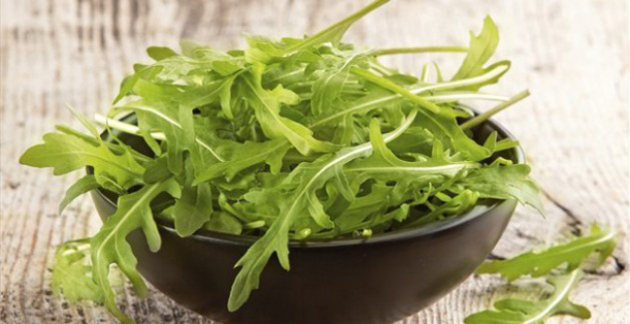
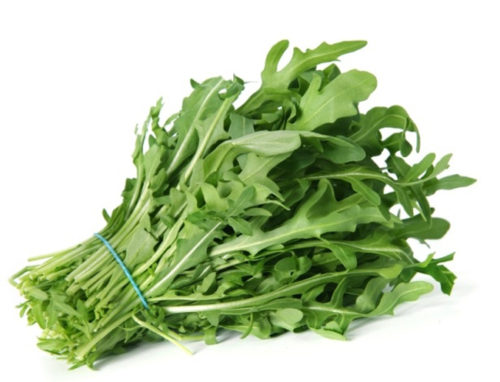
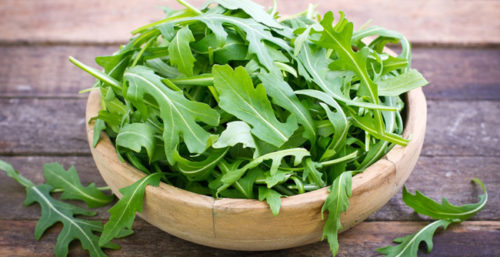
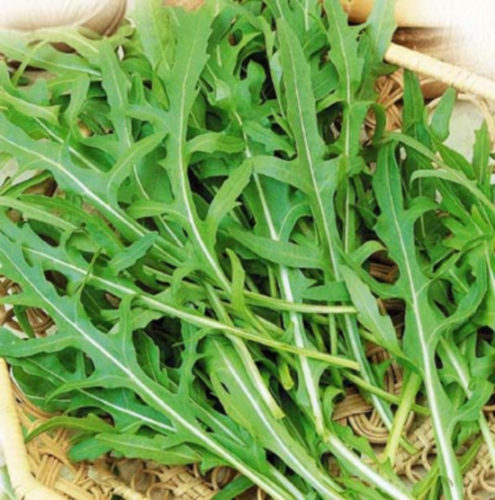
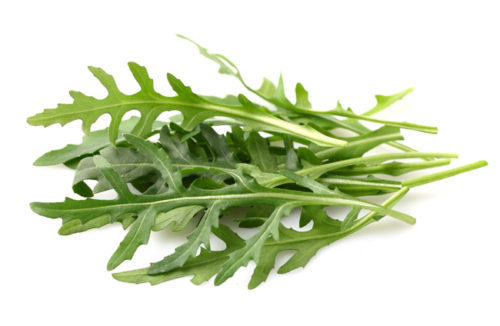

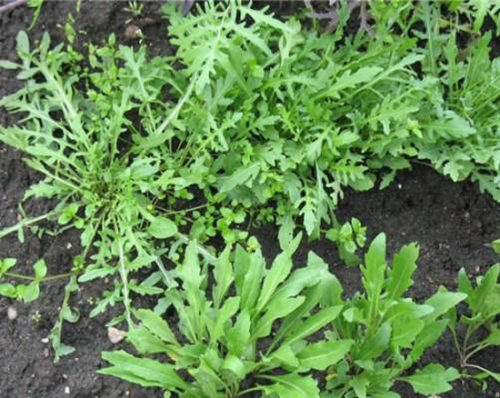
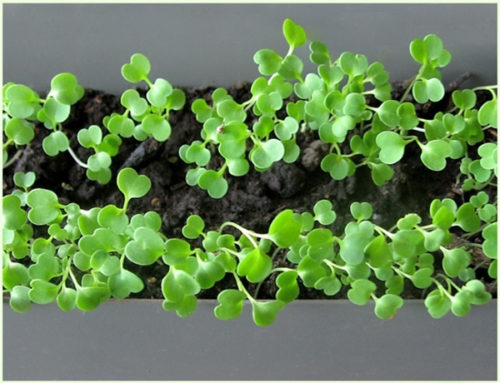
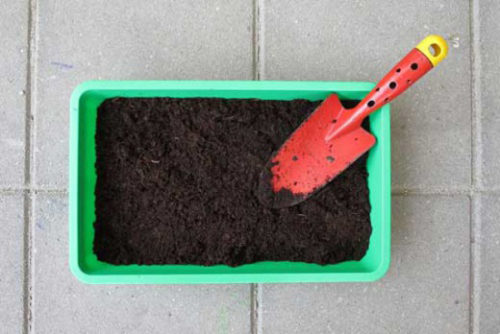
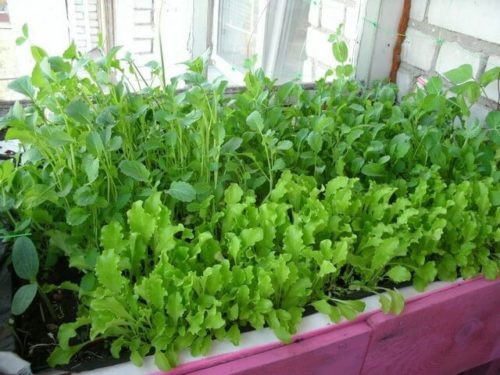
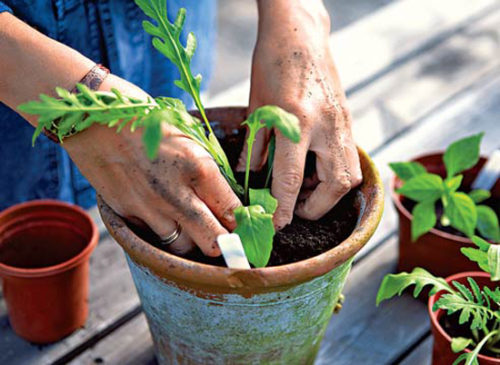
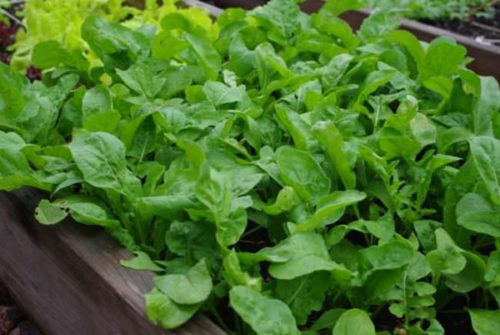













 Start a discussion ...
Start a discussion ...